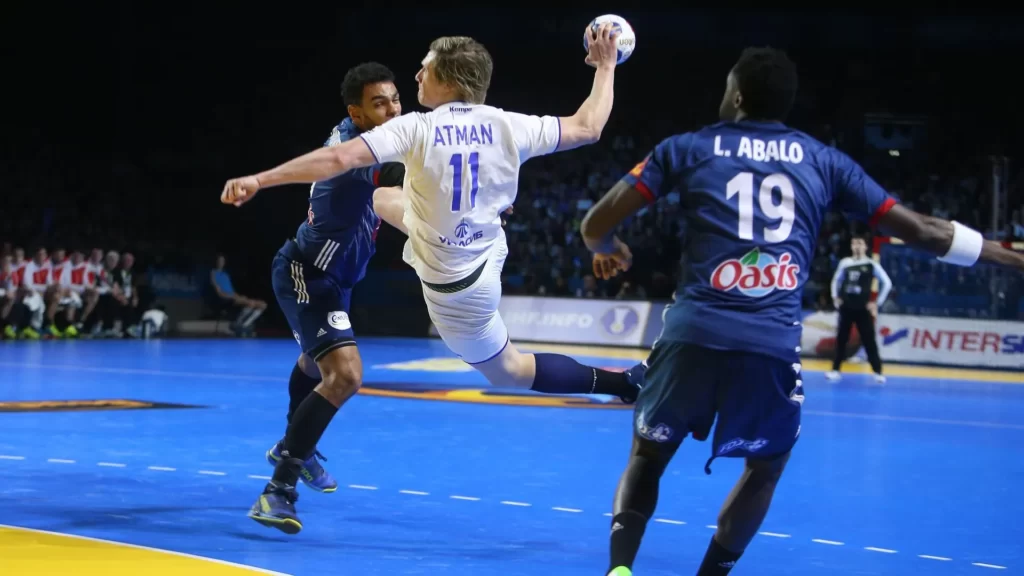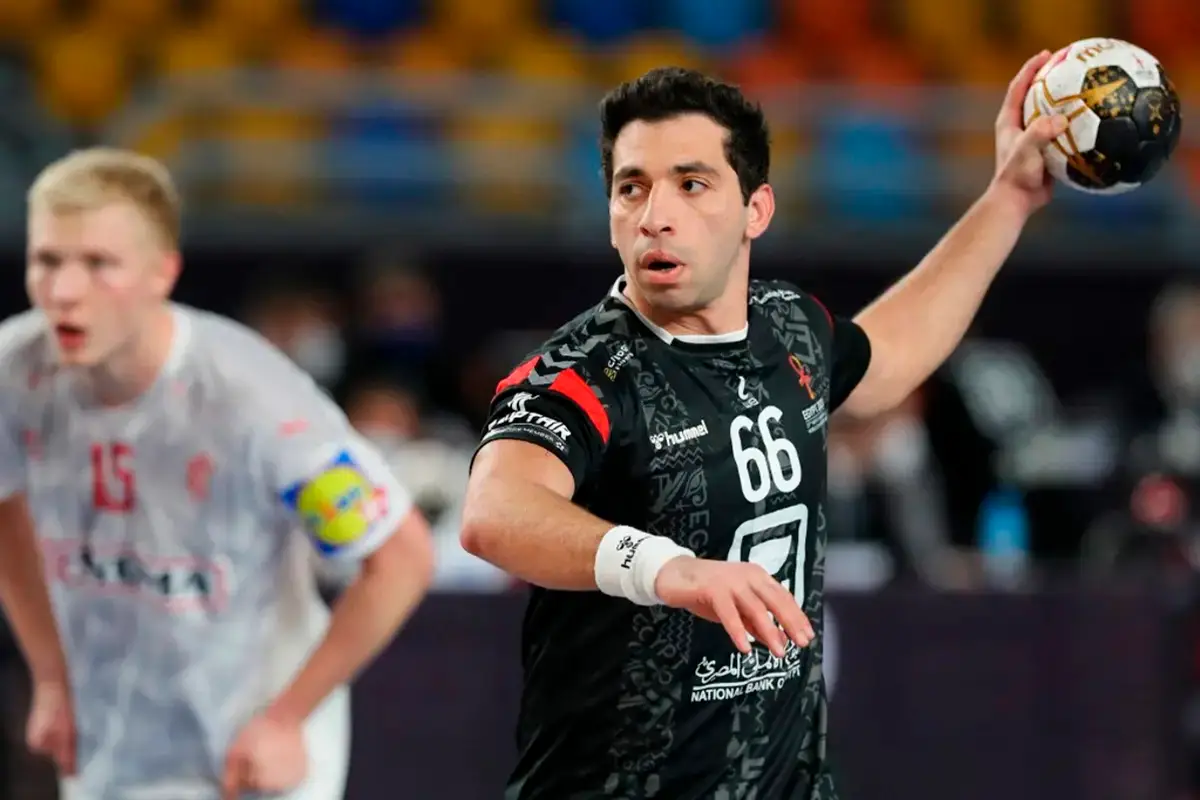Every time a team enters the field, it feels like a battle. A battle in which not only strength and technique are important, but also spirit. Russian handball players have proved to the whole world that willpower and perseverance can turn players into legends. Today we are going to talk about those who brought the country to the pedestal of world handball.
Dmitry Torganov: strategy and strength on the pitch
Born in 1971 into a family of athletes in Moscow, Dmitry Torganov was used to discipline from an early age. His father, a former volleyball player, instilled in him a love of team sports and his mother constantly supported him in his drive to succeed. Dmitry started playing handball at the age of 9 and quickly stood out for his perseverance and ability to see the game one step ahead. By the age of 17, he was already a member of the youth national team and proved to be a true leader. The star of Russian handball shone: thanks to his tactics and intelligence, he quickly made the transition to the senior national team.
Victories and achievements: steps to success
Dmitry Torganov won many awards during his career. In 1996, the handball player led the Russian national team to the gold medal at the Atlanta Olympics. The statistics are impressive: more than 500 matches at the highest level, more than 800 goals scored. Dmitry’s awards and achievements have inspired more than a generation of athletes.
Club career and playing in the national team
Torganov played for famous clubs like CSKA Moscow and German club Kiel, where he established himself as one of the best defenders. His contribution to the national team was invaluable: he skillfully led the defence, allowing the team to win prizes at the European and World Championships. Dmitry was also one of the first Russian handball players to achieve success at foreign clubs, and playing in Germany brought him recognition outside his native country.
Andrey Lavrov is a living legend of Russian handball
Andrey Lavrov is a name everyone knows. Andrey was born in 1962 in Krasnodar, where he showed an interest in sports from an early age. He started playing handball at the age of 10 under coach Vladimir Ilyin, who immediately saw great motivation in him. By the age of 20, Lavrov was already defending the gates of the top national team, showing incredible reaction and courage. Russia’s top handball players are proud of him, as Andrei became the only handball player to win three Olympic gold medals: 1988, 1992 and 2000.
Achievements that will go down in sports history
Lavrov broke many records during his career. Here are some of Lavrov’s most significant achievements:
- Three Olympic gold medals (1988, 1992, 2000).
- Five world and European championship titles.
- More than 700 professional matches.
- Inducted into the Handball Hall of Fame in 2004.
- Twice recognised as best goalkeeper at the Olympics (1992, 2000).
- Regular captain of the Russian national team for ten years.
Playing abroad: experience and success
Besides playing in Russia, the handball star also played for German ‘Flensburg’, where she continued to show a high level of performance. His successful career in Germany confirmed that the Russian handball school is one of the best in the world.
Vasily Kudinov: inspiring skill
 Vasili Kudinov was born in 1969 in Volgograd, where he started his sports career with football, but at the age of 12 he became interested in handball thanks to his school coach. He progressed quickly and by the age of 18 he was already part of the selection of local club Kaustik and a year later he made his debut for the national team. A legend of Russian handball, Kudinov gave the country more than one victory.
Vasili Kudinov was born in 1969 in Volgograd, where he started his sports career with football, but at the age of 12 he became interested in handball thanks to his school coach. He progressed quickly and by the age of 18 he was already part of the selection of local club Kaustik and a year later he made his debut for the national team. A legend of Russian handball, Kudinov gave the country more than one victory.
Trophies
Vasily won a number of accolades during his career, including two gold medals at the 1992 and 2000 Olympics and several European titles. The statistics are fascinating: with more than 1,000 goals scored in international tournaments, the handball player is one of the most prolific in Russian history.
Achievements for club and national team
Kudinov played for the national team for more than 15 years and became a real leader of the team. He also played for German club Gummersbach and French club Marseille, where he was appreciated for his fighting spirit and determination.
Oleg Kiselev is a symbol of perseverance and hard work.
Oleg Kiselev, born in 1967 in Togliatti, has been striving for success in sport from an early age. He started playing handball at the age of 11 under coach Alexander Vasiliev, who taught him discipline and tactics. Russian handball players have always been known for their hard work and Kiselev became one of the best examples. At the age of 19, he was already playing for the USSR’s main national team.
Handballer’s achievements in clubs and the Russian national team
Kiselev played in the leading clubs of his country and Germany: ‘SKA Minsk’ and ‘Hamburg’. His career in the national team began with a victory at the 1986 World Championships and later he became one of the main players of the team, which he helped win gold at the European Championships.
Igor Levshin: unbreakable spirit
Igor Levshin was born in 1974 in Omsk to a family of engineers. Despite the lack of sports tradition in his family, Igor showed an interest in handball from an early age, inspired by the successes of the USSR national team. At the age of 14, he started training at a gym and by 20, he had joined the national team.
Career milestones and accolades
The handball player became known for his outstanding play at the 1998 European Championships, where he helped the Russian national team win the silver medal. His achievements also included a gold medal at the 2001 World Cup.
Club and national team
Levshin played for Omsk ‘Sturm’ and German club Magdeburg, where he became one of the key players. His contribution to the team was significant, he not only filled the role of point guard, but also inspired the team with his example.
Alexey Ryabov, master of the defensive line
Alexey Ryabov started his career in 1985 in Volgograd. From the age of 12, he joined the sports section, where he quickly stood out as one of the best defenders. The handball player helped the national team win gold at the 1993 World Championships and also became a multiple Russian champion as a member of the club ‘Kustik’. Among his achievements: more than 600 official matches and a huge number of records related to defensive actions on the pitch.
Playing for the national team and clubs: a success story
Alexey Ryabov played for the national team and for German clubs Kaustik and Kiel, where he established himself as one of the best defenders. His contribution to the team’s success was huge, thanks to his skills, Russia remained at the top of world handball for many years.
Conclusion
 Russian handball players have left an indelible mark on the history of world sport. Their hard work, perseverance and dedication have made the country one of the strongest handball powers. Each of them – Organov, Lavrov, Kudinov, Kiselev, Levshin and Ryabov – made invaluable contributions to the development of the sport and became role models for future generations. Their achievements not only inspire, but also remind us that true success comes from those who achieve it with total commitment.
Russian handball players have left an indelible mark on the history of world sport. Their hard work, perseverance and dedication have made the country one of the strongest handball powers. Each of them – Organov, Lavrov, Kudinov, Kiselev, Levshin and Ryabov – made invaluable contributions to the development of the sport and became role models for future generations. Their achievements not only inspire, but also remind us that true success comes from those who achieve it with total commitment.
 en
en  ru
ru  de
de  ar
ar  es
es  nl
nl  hi
hi  fr
fr  it
it  pt
pt  el
el 










